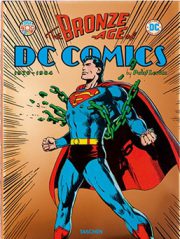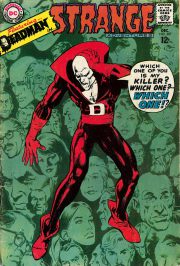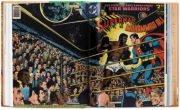The third volume of the DC chronicles is out and shows the company’s changing face and politics in the years 1970-1984. As the Golden Age and the Silver Age were focused on the development of DC comics until the year 1970, the current edition is labeled the “Bronze Age“ and demonstrates how the comic artists and their superheroes adapted to transformations in American society.
 For the rise of so-called “underground comics” and small editions of self-published comic books had an influence on many of DC’s characters who underwent another “maintenance” in their features and mostly their overall motivation. (In 1976, the DC logo also got overhauled, now featuring four stars.) At the same time, due to bad sales, many teenage and romance lines were discontinued.
For the rise of so-called “underground comics” and small editions of self-published comic books had an influence on many of DC’s characters who underwent another “maintenance” in their features and mostly their overall motivation. (In 1976, the DC logo also got overhauled, now featuring four stars.) At the same time, due to bad sales, many teenage and romance lines were discontinued.
Instead, ghost and fantasy titles, mystery, and war stories had a comeback. With women’s liberation movement and the continuing fight of minorities for social equality, new superheroes were conceived, mostly of African-American origin.

The bronze age edition again features one exclusive interview, this time with Denny O’Neil, writer of Green Lantern and Green Arrow.
The 1970s also saw the first professional big-budget approach to a Superman movie, that had its premier on December 15, 1978. This naturally boosted comic book sales considerably, at least for a short while.
Obviously, the volume covers this event at some length with many impressions of the legendary DC special edition “Superman vs. Muhammad Ali” by Neil Adams and O’Neil.
 In general, the bronze age established comic book culture as an art form and a shift towards adults (who probably used to be young comic book reads once) as the target of marketing.
In general, the bronze age established comic book culture as an art form and a shift towards adults (who probably used to be young comic book reads once) as the target of marketing.
As usual, Taschen decided to present the edition in king size 9.5 x 1.6 x 12.9 inches on 400 pages, and the book is available in three different language version.
Review by Dr. A. Ebert © 2016
Paul Levitz. The Bronze Age of DC Comics 1970-1984. Taschen, 2015, 400 p., ISBN 978-3836535793.
